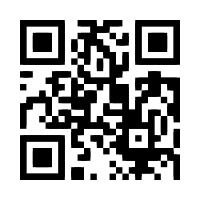This article is more than 5 years old.
This session was conducted by Beatrice Pulliam and Chris Landry from Providence College. They discussed the use of mobile taggin and QR codes. QR codes are 2-dimensional codes which can be scanned using a camera (on a cell phone for example). Some functions of mobile tagging include websites, contacts, and geo-location.
I have been wondering how to use QR codes in libraries for the last year & have come up empty so I was excited to hear how QR codes were being used! In this case Providence was looking for a new way to market content and services.They would up to use it for content promotion (e.g. libguides), loading contextual videos, use as digital ‘wayfinders’ in the stacks, create a backchannel community, etc.
They recommended doing some reading – Univ of Bath QR blog, Nate Hill – hyperlinking reality article in lj, Andrew Walsh’s mobile library blog, download a reader such as beetagg, take advantage of management tools on these sites. A fun one is at http://bit.ly/qrinfo. Some neat features of QR codes – they can be scanned from a screen (yes tim – my dream came true 🙂 ), using QR codes in special collections as a way to get more information (think about our display cases!). It turns out that you can even change the behavior of the QR code without changing the code. Some crowd generated ideas include putting on business cards, including in press releases, space layout, geocaching.
Some tips for success included – make content/services more discoverable, support physical and digital services, position library as leader in this tech, following user tech capabilities. Curious? grab a reader for your phone & hit the code!

3 Comments on ‘Handheld Librarian – Mobile tagging / QR codes’
That’s awesome! My husband and I saw them for the first time in a golf magazine — I’m excited to think about possibilities for special collections!
Put QR codes next to current journals
Hi Erik, Aresymbol scanners and qr codes somewhat related? I am curious if there is a connection however flimsy between those two.